Railroad Museum of Pennsylvania
Posted
#216498
(In Topic #11824)
Full Member
Part 2 - Freight and the fastest steam train
Next installment of the day out at the Railroad Museum of Pennsylvania.First up - a locomotive sand hopper. Used to move loco sand around from a central sand drying facility when railways got rid of local sand drying facilities in the 1950's and 1960's. I'm modeling a rake of 2-bay sand hoppers for an upcoming convention in October (see Max's thread for the NMRA certificate scheme) so the piping and brake detail was of particular interest. This one's a 3-bay covered hopper with Salco cylindrical hatches on the top. These are 30" in diameter, very difficult to source in HO since the demise of Detail Associates. Looks like a 3D print or brass etch, or a scratch build from bits and pieces. I particularly liked the dented sides of the hopper.

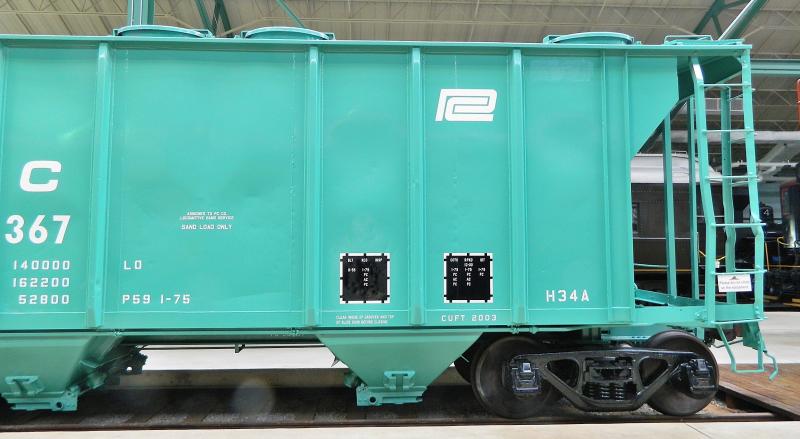
Now the "business end". Interesting how the hand brake rod pulls the quadrant lever, which pulls the brake cylinder piston/actuating arm out and thus locks the brakes. The rod connecting the B end brake lever to the A end brake lever runs between the hopper outlets (above).
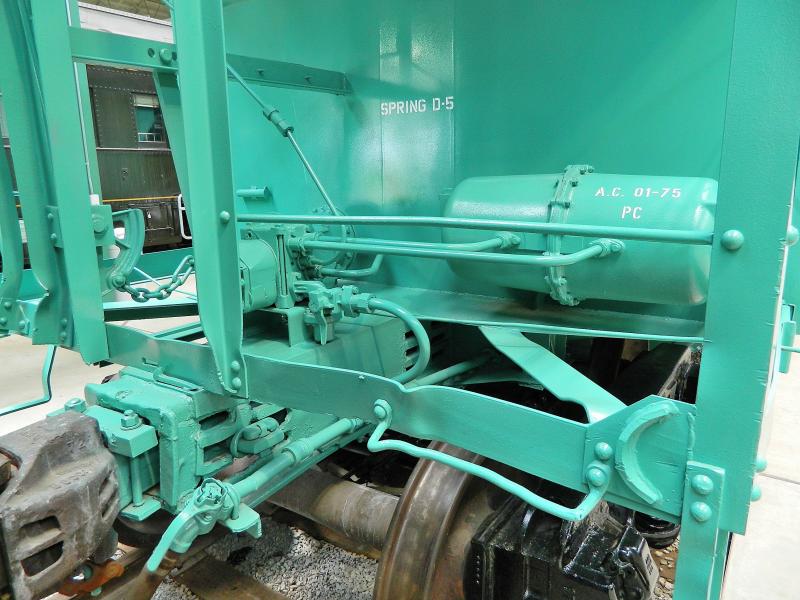
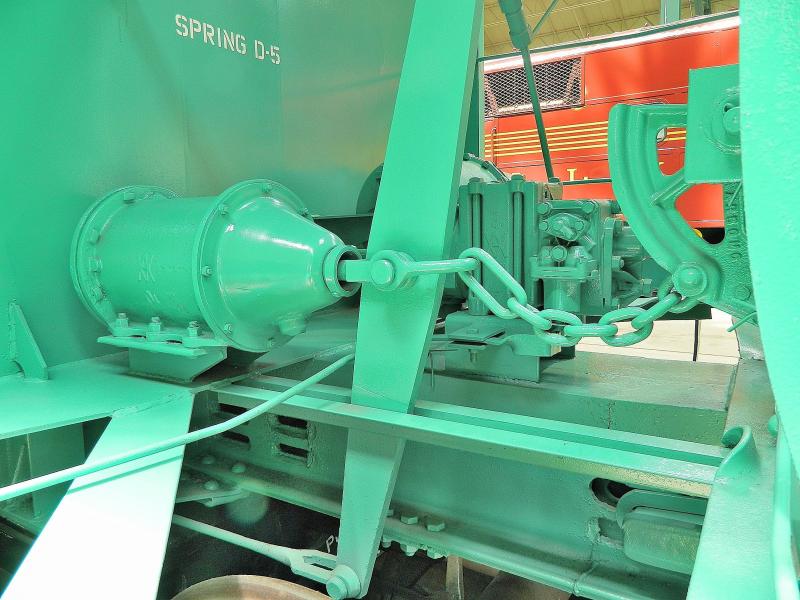
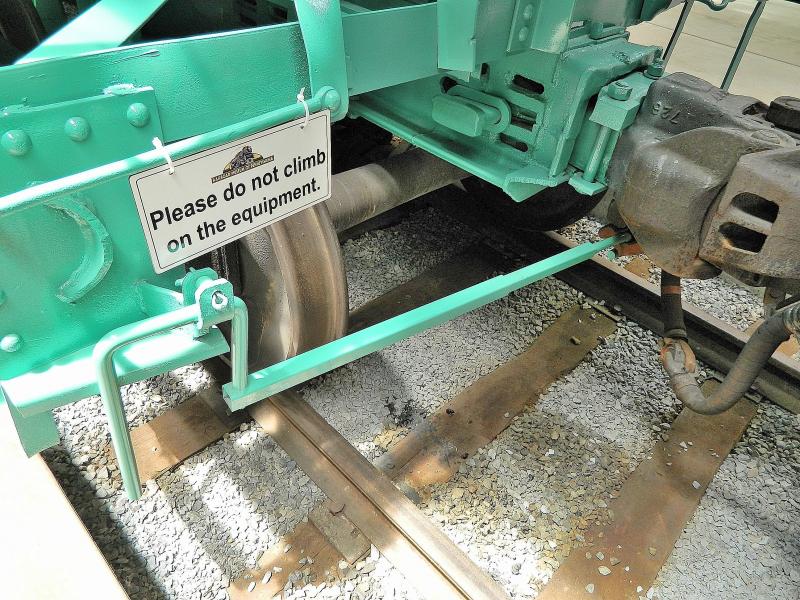
The telescoping arm for the coupler trip pin lever is an interesting feature.
Up next - 6000 gallon tank car. Built in 1939, still running up until 1969. useful for special oils/lubricants with 3 domes - 3 tanks for different products. I was interested in the brake detail, as tank cars tend to be different to boxcars…in this case, the AB valve, air reservoir and brake cylinder are all on the same side, with the valve above the air reservoir. ACFX is American Car and Foundry Leased car (built by ACF, leased to a railroad). Nice big wivets. Tangent Scale Models got it right. many other manufacturers haven't.
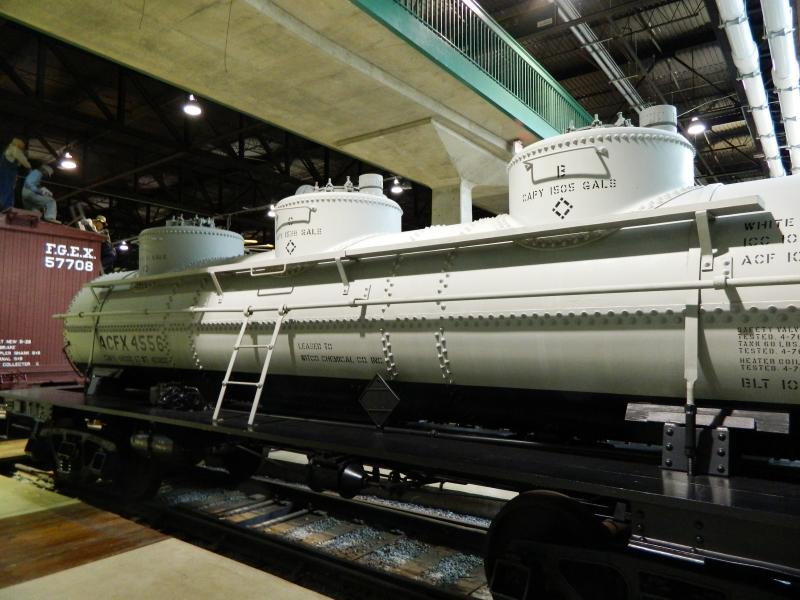

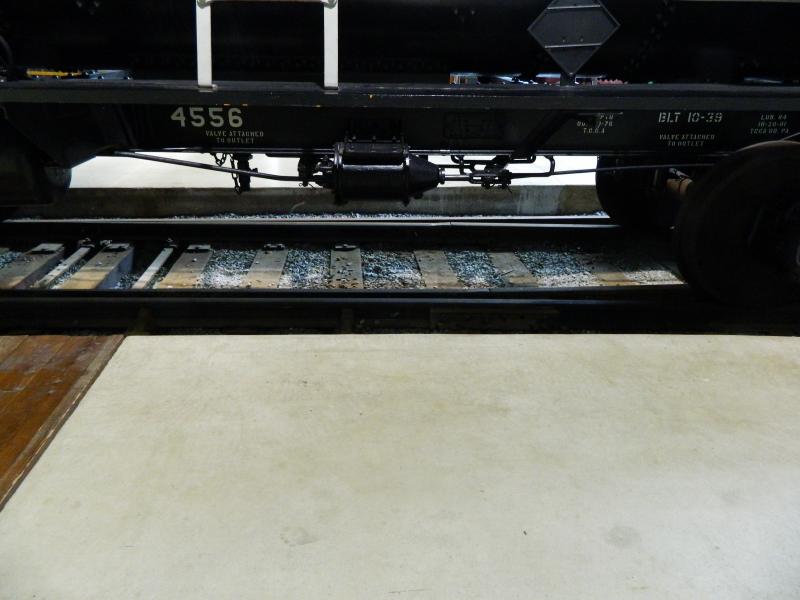
Brake rod and lever detail from the other side.

The museum has a sister locomotive to the Pennsylvania 4-4-2 7002, a Class E2, timed at 127.1 mph on June 11, 1905 on a 3 mile run between AY Tower and Elida, OH, pulling the "The New Pennsylvania Special". Previous to this the train had covered 131.4 miles in 115 minutes in an effort to make up a delay of 28 minutes. Credible, given that it was probably only pulling 3 passenger cars (around 150 tons). This would have been timed using a standard railroad timepiece by the conductor, and I can vouch for the accuracy of my 1907 Hamilton Railroad watch, which loses about 30 seconds a week. If you believe the record set by the City of Truro, this one is just as credible. Big 80"drivers and certainly enough horsepower. Data from other E-class runs indicate 100 mph was easily achievable.
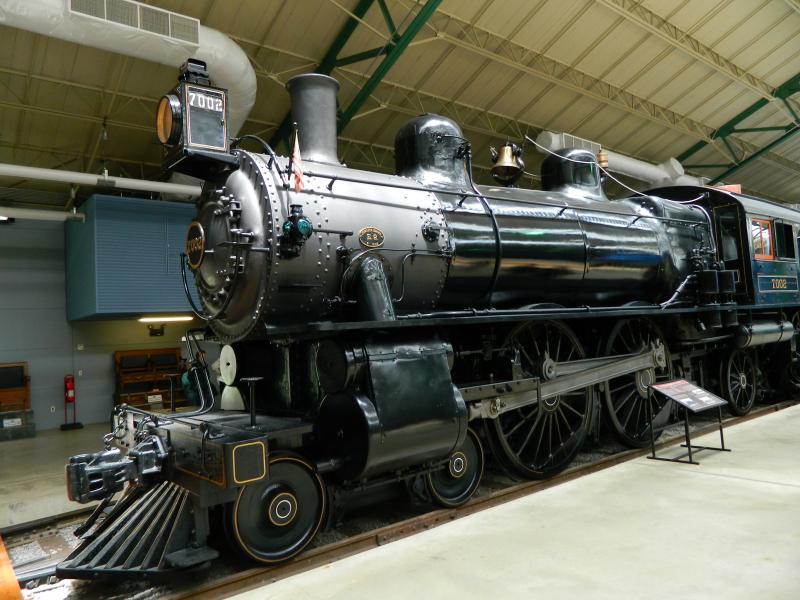
"Bobber" caboose. Interesting little 4-wheel caboose, relegated mainly to MOW work from around 1910 on due to the inability to take pusher locomotives. Still found on flat branch lines in the 1930's. Another modeling project.

Brake end showing coupler pin lever at the top of the knuckle coupler.
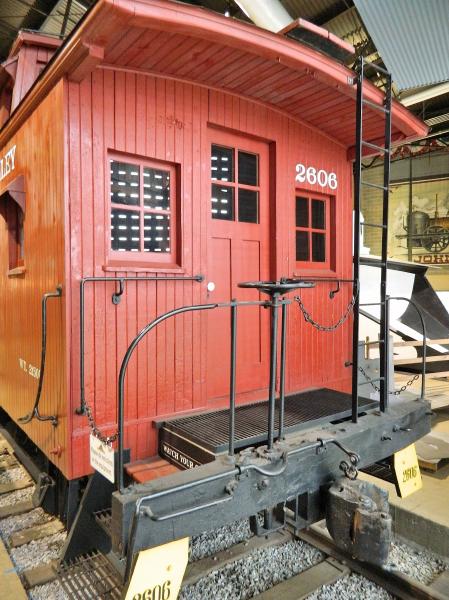
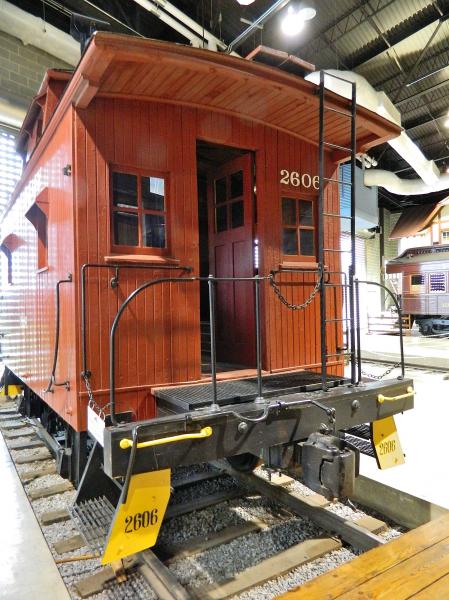
Wood boxcar brake detail. This is an older boxcarcar (1890's) with modern AB brakes (1942 on) with the hand brake wheel at roof level. Brakes were locked down by the chain being wound around the shaft. Interesting detail I wasn't aware of and rarely modeled. Coupler trip lever at top of knuckle coupler.
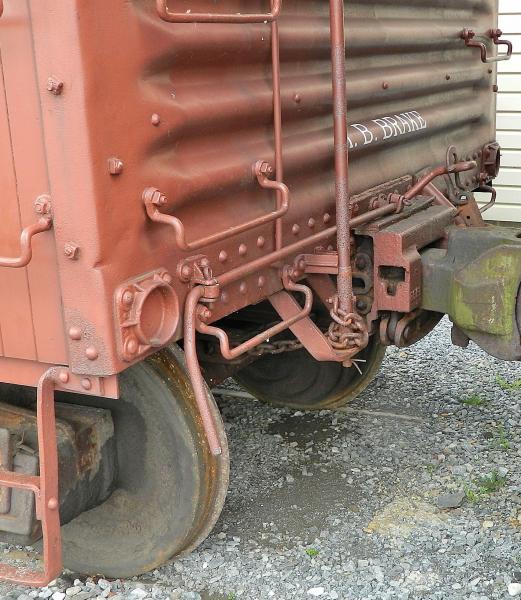
Contrast the above with an express RPO/mail/baggage car of the same vintage. I'll be addressing this on the RPO I'm working on (as well as the heavyweight passenger cars).
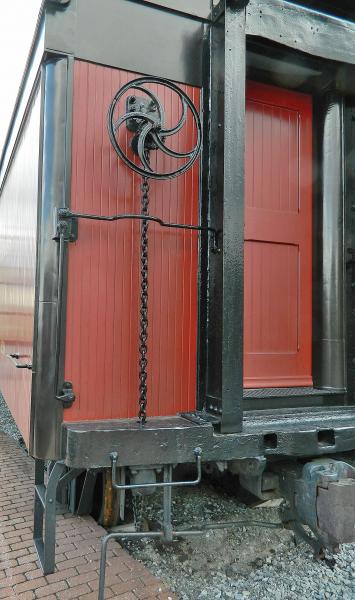
If you ever find yourself in Pennsylvania, the museum is well worth a visit. It's in Strasburg, Lancaster County, PA, about 90 minutes north of Baltimore, 2 hours from Washington, DC. Amish country, watch out for horse-drawn passenger vans on all roads except the interstates and dual carriageway.
Nigel
©Nigel C. Phillips
Posted
Full Member
The record was never verified and was often disputed. The New York Times believed the claims to have been exaggerated with the speed being closer to, a still respectable, 70–80 miles per hour (110–130 km/h).
Another report suggests the timing was done by a conductor on the train.this speed was based solely on two passing times recorded by separate observers at two different points (AY Tower and Elida) just 3 miles apart
Mallard's 126MPH was recorded by the dynamometer car included in the consist.
Cheers MIKE
I'm like my avatar - a local ruin!
I'm like my avatar - a local ruin!
Posted
Full Member
Correct, based on the conductor's timepiece. Although I have read also based on timings between the 2 signal towers. Who knows, it was not a record-breaking attempt, just a driver making up 28 minutes lost time on the inaugural run due to a previous engine failure. Nothing official (as in a dynomometer), so as I said, if you believe City of Truro…My personal take is that the boiler evaporation rate and valve timing at this date would not be up to that speed. It was only doing 68 mph before this, almost doubling it's speed is stretching credulity. Big plaque at the museum though, and it's on their website, so it must be true.
Ah, Mallard. Gresley never claimed 126, only close to 125 (probably 124.5). That NER/LNER dynomometer car was known to be a bit suspect, the actual record speed is a momentary blip on the chart for all of a few yards (60 yards) which had happened before on other runs with the A-series. My understanding of the run is that that it suddenly went from barely sustaining 124.5 mph on the steepest 1:200 part of the bank to 126 mph on the short 1: 240 part of the bank. I also think that steam was being reduced around this time due to the aniseed bomb going off (big-end failure on the middle cylinder). Gresley's conjugated valve gear was probably well past maximum efficiency at this speed due to flexing of the long rods. Expansion of the connecting rod at high speed/temperature also resulted in the piston hitting the cylinder head. Plenty of mechanical issues in the design that would have produced profound jolts. Mallard failed and was replaced at Peterborough, and towed back for major repairs. It took several years to get all of this working properly (and a GWR big-end design). It's in the books, on the museum website, so it must be true. Just not over here (or in Germany).
The data for the Borsig Hudson 4-6-4 is much more convincing with 124.5 mph at 1:1000.
These days the GPS in a tablet would be more accurate than those dynomometer cars with electro-mechanical mechanisms and a wheel on the rail. Did anybody check the wheel diameter/concentricity before the run?
Nigel
©Nigel C. Phillips
Posted
Full Member
Size and speed may not be everything, particularly to enthusiasts, but commercially, they matter more than most and the bigger the distances, the more they matter!
I totally agree regarding the dented hopper panels. A well used piece of kit!
Bill
At 6'4'', Bill is a tall chap, then again, when horizontal he is rather long and people often used to trip over him! . . . and so a nickname was born :)
Posted
Full Member
Thanks. Irrespective of the speed records (the GG1 was faster) it's a great day out. We have a number of museums and working lines within a few hours drive, so I'm spoiled for choice.
I was planning on having a ride on the Norfolk & Southern streamlined Class J 4-6-4 #611 next month (until I was reminded it's the youngest one's ballet class show that day. And the oldest one's piano recital the following day when I could have gone and taken some photos. I could be pushing my luck if I miss these. Another getaroundtoit).
According to the website this locomotive was tested with a 15-passenger car consist (1015 tons) at 115 mph on level tangent track. All this with 70" drivers (and 80,000 lbs tractive effort, about double that of a GWR King). It's passenger schedules routinely called for speeds approaching 100 mph.
Based at the Virginia Museum of Transportation in Roanoke, an easy 3-hour drive from here, so a day out is planned when it's not being toured. Photos to follow.
Nigel
©Nigel C. Phillips
1 guest and 0 members have just viewed this.

